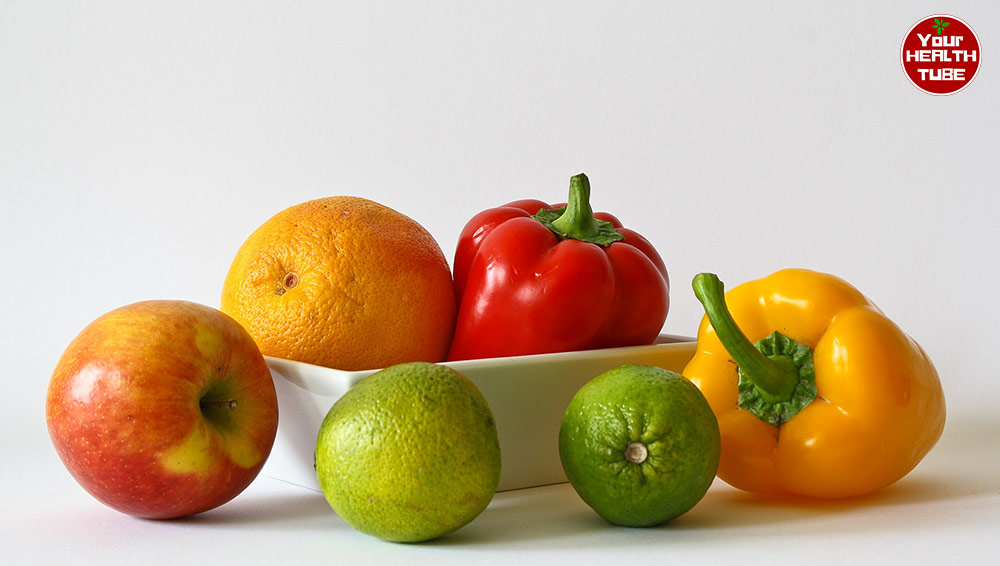Eat more of these vitamin C-rich foods to build your body’s defense against common cold and flu.
If you drink a glass of orange juice each time you start sniffing in order to get more Vitamin C – you may be onto something. However, the research found that Vitamin C intake cannot actually prevent colds – well, it may help a little reduce the severity of the symptoms and shorten the length of time you’re ill 1 . But in spite of their status for being laden with 69.7 mg of Vitamin C – a dose that a medium orange can provide – is lesser than many other common vegetables and fruits.
Foods Highest in Vitamin C 
In order to get the ultimate Vitamin C hit – load on the following superfoods:
- Peppers
Yellow bell peppers are considerate as one of the greatest source of Vitamin C (100 grams of bell peppers provide 183.5 mg, 306% DV of Vitamin C). 1/2 of diced or chopped chili peppers brings 107.8 mg of vitamin C. Moreover, according to the scientists from the University of Buffalo – capsaicin, the compound responsible for the spicy, hot taste of the chili peppers can help relieve muscle and joint pain 2 . Sweet green peppers (220% DV) and sweet red peppers (349% DV) are other peppers high in Vitamin C.
- Broccoli
This nutrition powerhouse provides a punch of filling fiber and 132 mg of vitamin C for just 30 calories per serving. Moreover, studies show broccoli might have cancer preventing possessions. 3
- Kale
In addition to 7 times the recommended dose of vitamin K and 2 times the recommended daily intake of vitamin A, a 1-cup serving of kale delivers 80.4 mg of vitamin C. This remarkable veggie also offers a sizeable dose of fatty acids and essential minerals.
- Strawberries
Just 1 cup of this sweet, delicious fruit delivers 84.7 mg of vitamin C, along with a healthy dose of folate and some other powerful compounds found to promote cardiovascular health. Plus, strawberries could help whiten your teeth naturally.
- Papaya
Scientists found that consuming papaya could help clear the sinuses, strengthen the bones, and brighten the skin 4 . A 1-cup serving offers around 88.3 mg of vitamin C.
- Brussels sprouts
Brussels sprouts are full of fiber and cancer-preventing phytonutrients, not to mention the high amount of Vitamin C (around 74.8 mg). In case you’re turned off by their pretty bitter taste – you can roast them in order to draw out their natural sweetness.
- Kiwi (Green)
Two kiwis (1 NLEA serving of kiwi) provide 137.2 mg of vitamin C. This fruit is also rich in copper and potassium.
- Cauliflower
Whether you mash it, steam it, or roast it, consuming a little head of cauliflower offers you a 127.7 mg dose of vitamin C, plus 5 grams of protein and 5 grams of fiber.
- Pineapple
Besides 78.9 mg of vitamin C, this tropical fruit contains bromelain, which is a digestive enzyme that assists break down foods and eliminate bloating. This potent enzyme also acts as an anti-inflammatory, which can help you get better faster after a tough exercise.
- Mango
Mango offers around 122.3 mg of vitamin C. It is also a good source of vitamin A, which as vitamin C plays a significant role in immunity and keeps your eyes healthy.
- Tomatoes
Tomatoes are also one of the best sources of Vitamin C. Two medium tomatoes have 0.3 grams of fat and just 44 calories. A tomato soup in the cold days can be a great boost of vitamin C. It can help to improve your immune system and save you from viruses and the common cold.
Conclusion:
Foods highest in Vitamin C are powerful antioxidants that can help decrease oxidative stress to the body and may lower the risk of cancer. Vitamin C is a vital nutrient required by the body for the maintenance and development of cartilage, blood vessels, and scar tissue.
High vitamin C foods include dark leafy greens, bell peppers, citrus fruits, berries, broccoli, peas, papaya, mango, kiwi, and tomatoes. The current daily value (DV) for Vitamin C is 60 mg.
